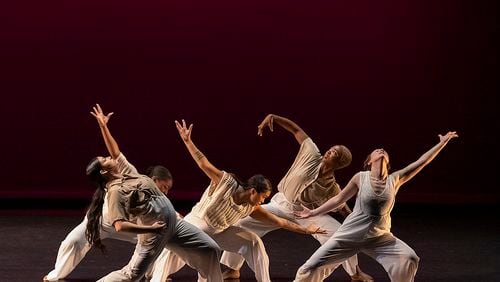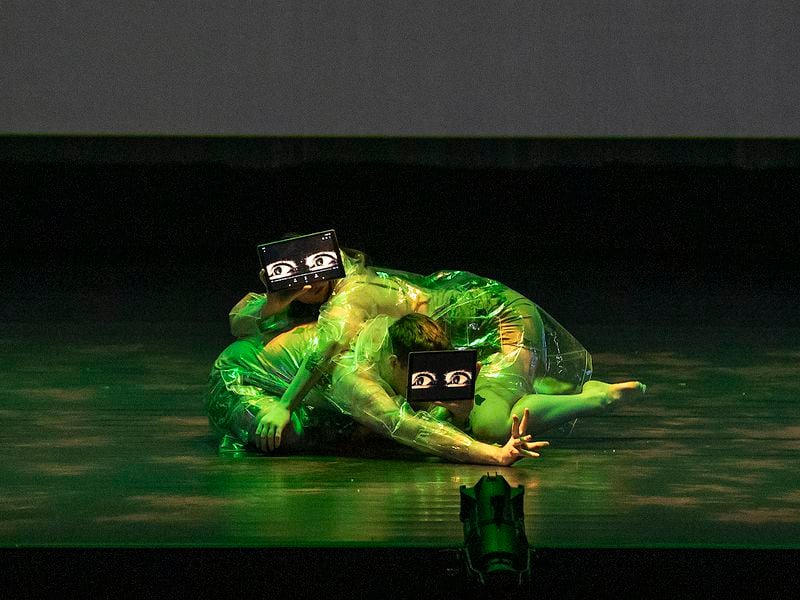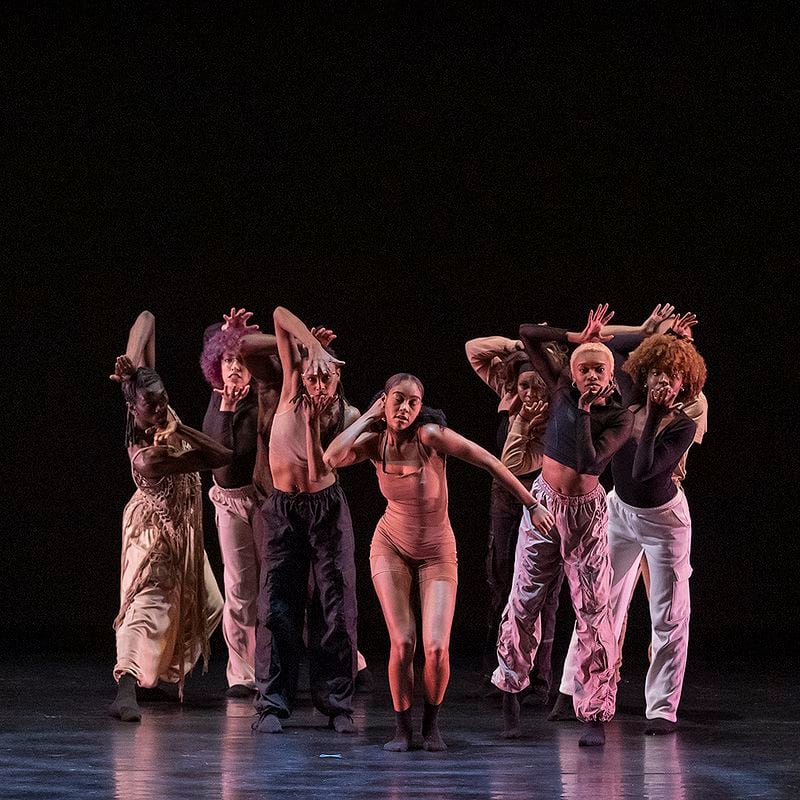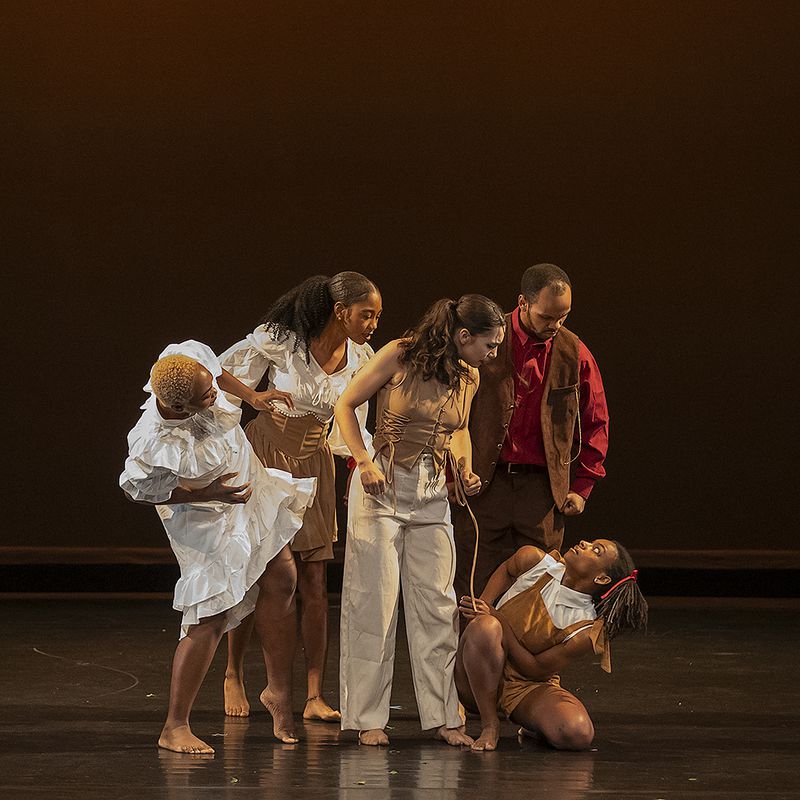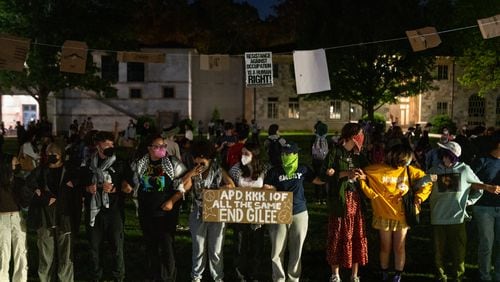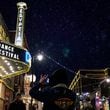This story was originally published by ArtsATL.
There’s no better reflection of the times than a young adult’s struggle to forge an authentic identity in a society that’s prone to dysfunction. Among myriad literary examples, Shakespeare’s “Hamlet” and Ta-Nehisi Coates’ “The Beautiful Struggle” come to mind.
Dance Canvas seeks to nurture these kinds of artistic voices in dance through its Choreography Career Development Initiative — the voices of young people who, in an arts ecosystem that favors power and privilege, often fall through the cracks.
Last Saturday, Dance Canvas showcased seven live works and one dance film, all by emerging dance artists, for a thought-provoking evening at Georgia Tech’s Ferst Center for the Arts.
Taking cues from the overarching theme of “innovation,” the artists explored subjects ranging from racial injustice to family dysfunction and from dreams to psychological transformation, as well as the effects of social media on human behavior.
Seven of Saturday’s eight works were live performances, and the eighth was one of four dance films previously screened Thursday evening.
Credit: Photo by Richard Calmes
Credit: Photo by Richard Calmes
Dancers’ technical level varied Saturday evening, as did the young choreographers’ command of craft. Each work clearly sought to express an honest perspective as the artists wrestled with tough and often intractable human issues.
A video of the choreographer’s statement of intent preceded each work. The evening began with Mamiko Usuda’s “A Lucid Dream,” which Usuda described as “an exploration of how our inner selves manifest within lucid dreams, and what surfaces in your mind when you’re awake to a dreamscape.”
Billy J. Hawkains III stood on the edge of a circle of light, seemingly etched on the floor. Samar Smith entered, and an inexplicably odd, push-pull relationship between the two unfurled, accompanied by an eerie, atmospheric soundscape. They stood side by side at the circle’s rim, Smith in a headstand and Hawkains upright, his foot placed on Smith’s supporting arm. Smith danced near an intense light, his huge shadow appearing behind him on the rear cyclorama. The two loped through space, flung their arms into overhead arcs and swung their legs into spiraling turns. At the end, Hawkains was again alone in the downlight, as if awakening from an irrational dream.
Dominique Kinsey’s “Nostalgia: What Is?” explored the idea of nostalgia and how memories and feelings of longing can resurface. To a soft keyboard melody that recalled lullabies, five dancers clad in loose white blouses and pants moved in and out of duets and trios, sometimes one against four and at other times in unison. Their quirky, tight gestures in front of the body contrasted with broad, sweeping turns — exchanges of support. Sound shifted to a muffled R&B song, then a child’s voice calling, followed by singer-songwriter Pink’s broodingly reflective “Yellow Cabriolet.”
Haley Ivy’s “Newcomer,” the ballet contribution to the evening, made the case that the genre can embrace horror stories. To mysteriously evocative music by Edward Elgar and Philippe Hersant, a woman in sapphire blue found herself surrounded by four wraith-like women. They entrapped her with the faceless relentlessness of the undead, ultimately breaking her will to escape.
The dance film “Sheep,’ by Destiny Arlette Cooke, offered another journey into the surreal. A young man encounters two women — the first a Goth-clad girl in a laundromat, the second a freestyle street dancer in an underground metro station. When the young man returns to his apartment, both women appear in a feverish dream, and he coughs up remnants of the encounters in the form of threads, jewelry and a sock one woman left behind.
Credit: Photo by Richard Calmes
Credit: Photo by Richard Calmes
Christiana “Chrissy” McLeod Horn’s incisive and compelling “Freaux Tales,” an evening highlight, celebrated the richness of Black hair stories. Speaking through the lens of Afrofuturism, Horn’s style draws from hip-hop, majorette and contemporary dance. Dancers passed among them a storybook, “Freaux Tales,” as text and songs — from Solange Knowles’ “Don’t Touch My Hair” to Kendrick Lamar’s “United in Grief” — laid bare a stigma around Black hair and its roots in slavery, racism and the dehumanization of Black people.
With unbridled fury and raw honesty, nine African American dancers seemed to work through generational trauma, finally emerging with black hand fans, which they unfolded, perhaps as a symbol of personal freedom, authenticity and the reclamation of power.
If “Freaux Tales” pushed anyone out of their comfort zone, Löris McIntosh’s “Un/Bound (2024)” took its audience on a healing journey. McIntosh, who has a bachelor’s degree in neuroscience and behavioral biology, explored the human capacity to break limiting habitual patterns in order to reimagine reality and rebuild oneself. To hypnotic piano music, a solo figure shaped her body around a spinning aerial lyra, or hoop, to create elegant spiraling motions. Opposite her, a group of five dancers seemed to embody her self-actualizing journey, at first moving like a single organism, then evolving together to support her transformation.
Madeline Maxine Gorman’s timely “Artificial Eden” was a searing comment on how pervasive social media and mobile devices affect human behavior. Dancers Dylan Lambert and Alexandra McGriff, lit in green, became engrossed in their individual devices. They fought for one another’s devices, related to one another through their devices and finally — their eyes appearing on the outsides of their tablets — seemed to see the world solely through their screens.
Credit: Photo by Richard Calmes
Credit: Photo by Richard Calmes
Destiny Diaz’s “Family Portrait” rounded off the evening with absurdist humor and outstanding technical polish. Centered on a family of five — two parents and three daughters — the piece explored how dynamics of disconnection and miscommunication can tear a family apart.
Diaz shaped her characters and their interrelationships with care and subtlety. To the classic mambo song “Cherry Pink and Apple Blossom White,” relatable family dynamics appeared in a father who forbade his older daughter to wear a slinky red dress, a baby sister everyone picked on, an ignored middle child and parents whose buoyant love became tinged with anger. A series of tableaux — poses for family photos, at first normal then increasingly unbalanced — developed into a hypertense and darkly funny portrayal of family dysfunction.
“Family Portrait” was an outstanding finale to a program that spanned inner landscapes of some of today’s emerging dance makers, showing their courage, honesty and readiness to take on the world.
::
Cynthia Bond Perry has covered dance for ArtsATL since the website was founded in 2009. One of the most respected dance writers in the Southeast, she also contributes to Dance Magazine, Dance International and The Atlanta Journal-Constitution. She has an M.F.A. in narrative media writing from the University of Georgia.
Credit: ArtsATL
Credit: ArtsATL
MEET OUR PARTNER
ArtsATL (artsatl.org) is a nonprofit organization that plays a critical role in educating and informing audiences about metro Atlanta’s arts and culture. ArtsATL, founded in 2009, helps build a sustainable arts community contributing to the economic and cultural health of the city.
If you have any questions about this partnership or others, please contact Senior Manager of Partnerships Nicole Williams at nicole.williams@ajc.com.
